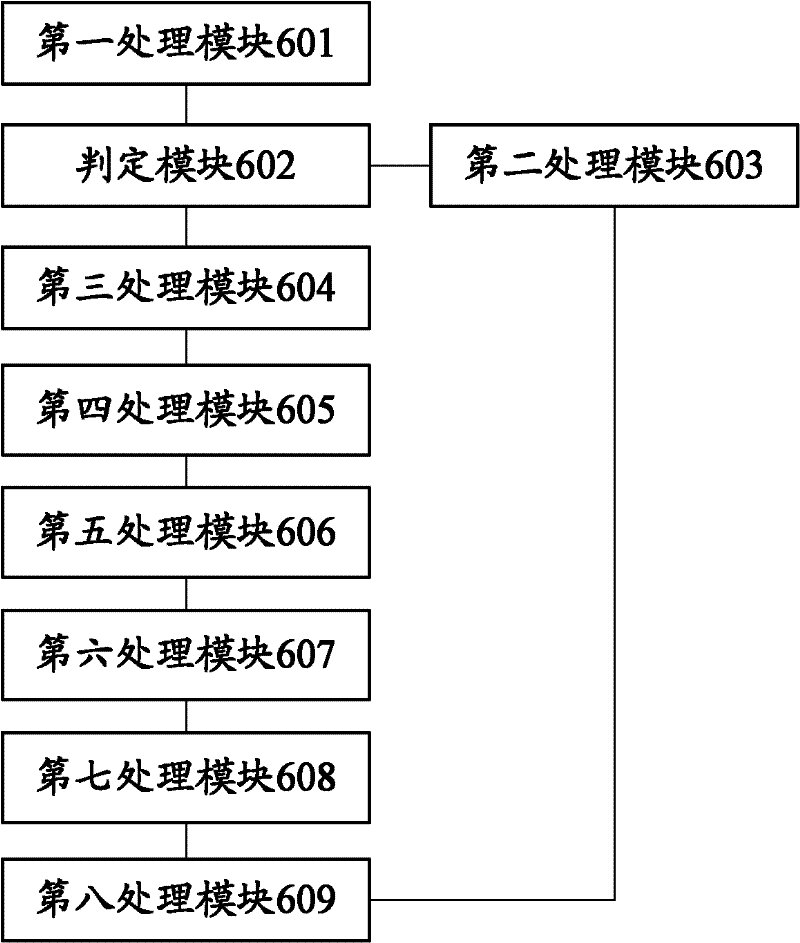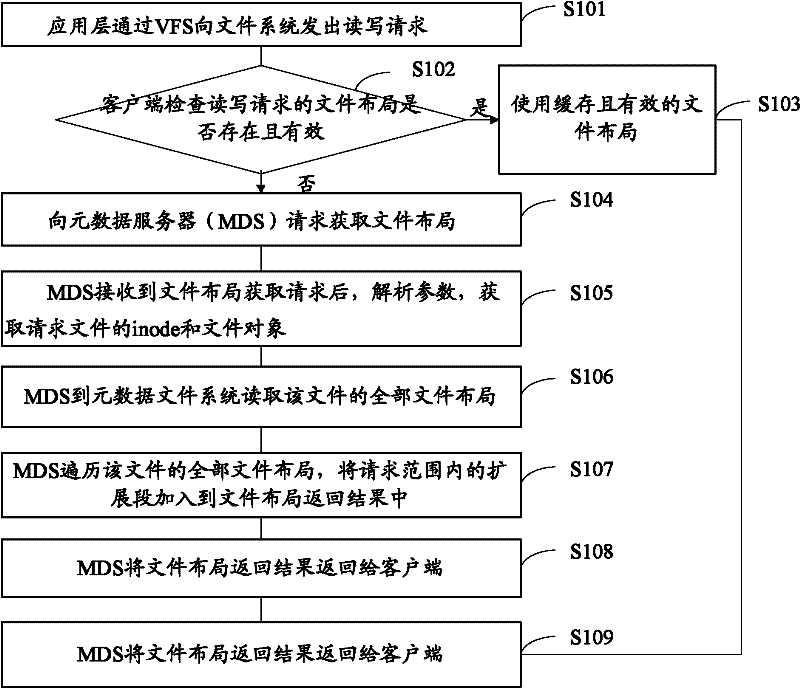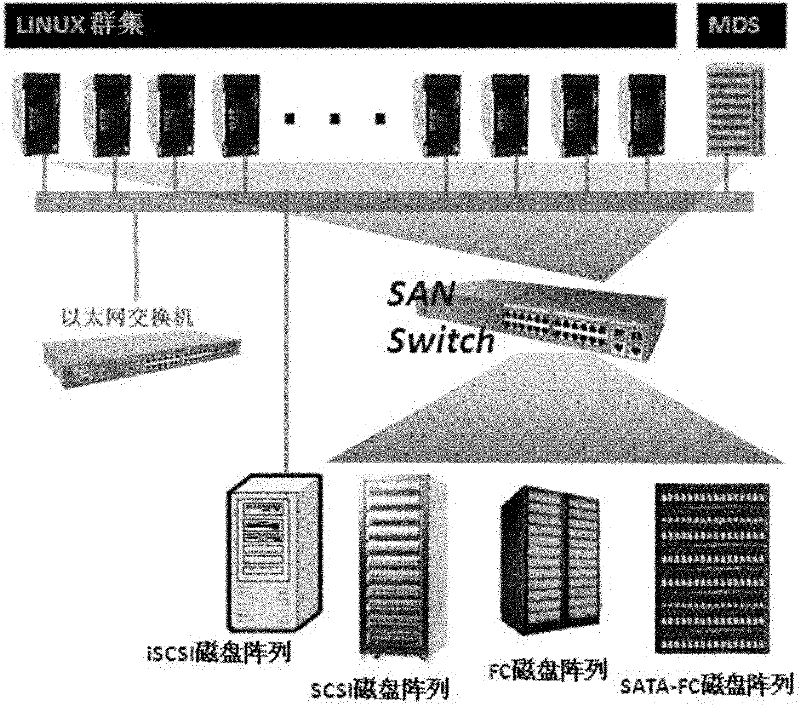Method and device for performing file layout extraction on parallel file system
A file layout and file system technology, applied in transmission systems, electrical components, etc., can solve problems such as consistency maintenance, and achieve the effect of simplifying management, facilitating performance optimization, and reducing storage
- Summary
- Abstract
- Description
- Claims
- Application Information
AI Technical Summary
Problems solved by technology
Method used
Image
Examples
Embodiment 1
[0068] Reference figure 1 , Shows a flow chart of a method for extracting file layout from a parallel file system according to the present invention, and the method specifically includes:
[0069] Step S101, the application layer sends a read and write request to the file system through the VFS;
[0070] It should be noted that the method described in this embodiment is a method for extracting file layout from an asymmetric file system in a shared block storage device environment. Specifically, the asymmetric parallel file system of the shared block storage device consists of three parts: a client, a metadata server, and a shared storage device; the client runs on a server in the cluster and is used to receive file system operation requests submitted by user programs , Obtain the metadata information required in the submitted request through interaction with the metadata server, and then directly access the shared block storage device according to the obtained metadata information ...
Embodiment 2
[0181] In this embodiment, the method of the present invention will be further introduced in combination with practical applications. The required hardware structure is as follows: figure 2 As shown, it is composed of client, metadata server, shared block storage device (optical disk array, iSCSI disk array, etc.), SAN network, and high-speed Ethernet. Clients, metadata servers and shared block storage devices can be interconnected by SAN network, such as optical disk arrays, etc.; they can also be interconnected by high-speed Ethernet, such as iSCSI disk arrays. The interaction between the client and the metadata server is interconnected by high-speed Ethernet, and the software structure is as image 3 As shown, it consists of two parts: metadata server and client. The metadata server is divided into a metadata management module, a metadata file system, a block device driver module, and a communication module; the client is divided into a parallel file system client module, a ...
Embodiment 3
[0296] Reference Image 6 , Shows a structure diagram of an apparatus for extracting file layout from a parallel file system according to the present invention, and the apparatus specifically includes:
[0297] The first processing module 601 is used to complete the application layer sending read and write requests to the file system through the VFS;
[0298] The determination module 602 is used to complete the client side checking whether the file layout of the read and write request exists and is valid:
[0299] The second processing module 603 is configured to use a cached and effective file layout when the determination module determines yes;
[0300] The third processing module 604 is used to request the file layout to be obtained from a metadata server (MetaData Server, MDS) when the determination module determines that it is no:
[0301] The fourth processing module 605 is used for parsing the parameters after completing the MDS receiving the file layout obtaining request, and o...
PUM
 Login to View More
Login to View More Abstract
Description
Claims
Application Information
 Login to View More
Login to View More - R&D
- Intellectual Property
- Life Sciences
- Materials
- Tech Scout
- Unparalleled Data Quality
- Higher Quality Content
- 60% Fewer Hallucinations
Browse by: Latest US Patents, China's latest patents, Technical Efficacy Thesaurus, Application Domain, Technology Topic, Popular Technical Reports.
© 2025 PatSnap. All rights reserved.Legal|Privacy policy|Modern Slavery Act Transparency Statement|Sitemap|About US| Contact US: help@patsnap.com



